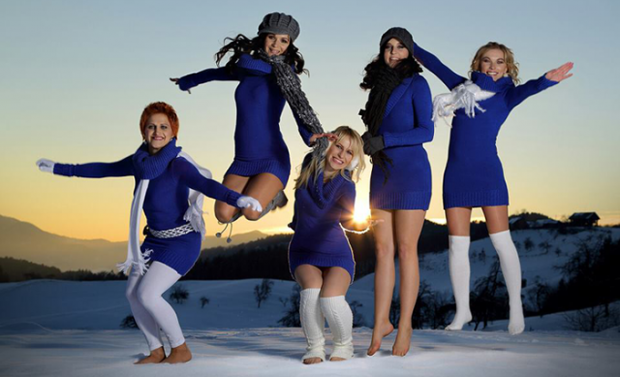Do you ever get the feeling that today’s big pop stars could still be pop stars even if they didn’t bother making music anymore?
Do pop stars still make music? If so, it seems very much secondary to whatever highly publicised drama/event they’re engaged in this week.
The Situationists called these sorts of events “spectacles”.
“What’s a Situationist go to do with it?” as Tina Turner once asked. Situationist theory is a Marxian critical theory that was developed in the 1960s by, among others, a French guy – Guy Debord.
Debord basically said as we continue to become alienated worker drones serving the industrial complex we’ll take solace and diversion in whatever spectacle is thrown up on the big screen for us to watch – so sit down, shut up, watch the show and hit that “buy” button they’ve just put into Twitter.
This is the principle of commodity fetishism, the domination of society by “intangible as well as tangible things,” which reaches its absolute fulfillment in the spectacle, where the tangible world is replaced by a selection of images which exist above it, and which simultaneously impose themselves as the tangible par excellence.
From what I can tell, pop stars recently engaged in these spectacles:
- J-Lo and Iggy Azalea released a teaser featuring their booties in a tandem shake and bake.
- Beyoncé’s daughter Blue Ivy gave her mum an award.
- Nicki Minaj released a twerking video which some feminists said was great and others said was terrible.
- Taylor Swift wore some weird short-shorts pantsuit to that Beyoncé awards show.
In a roundabout way this brings me to a concurrent musical event that flew beneath the radar of whatever amoeba/sentient/blob-like thing it is that passes for popular culture – what a quaint notion – these days.
What event was this that failed to penetrate the alien goo birth bubble of pop music now-ness in this here age of 21st Century pablum and palaver? Slovenian polka pop band Navihanke’s 2014 US tour – that’s what.
In the Dumb Age of Now in which we live, a vulgar gauge of pop-ness and relevance is how many Twitter & Facebook followers you have:
| Artist | Twitter Followers | Facebook Likes |
|---|---|---|
| J-Lo | 29,123,092 | 43,507,146 |
| Beyoncé | 13,587,250 | 64,761,713 |
| Nicki Minaj | 18,068,738 | 44,363,423 |
| Taylor Swift | 43,839,622 | 69,482,249 |
| Navihanke | 00,000,023 | 00,013,725 |
The Twitter account for Navihanke, or officially Ansambel Navihanke, has 23 followers (including yours truly).
Taylor Swift: 43.8 million. Navihanke: 23.
Twenty-three. Zilch zeroes at the end. (Ok, they’ve only tweeted once from their account. But stats are stats.)
To put Taylor Swift’s Twitter following in national population terms, her followers would be the 31st most populous nation in the world, dislodging Ukraine, which has a population of 42,988,026, and just behind Tanzania.
Invade that, Mr Putin!
Despite this lack of Twitter numbers, Navihanke seem fairly popular (from what I can tell by their YouTube hits) in their homeland of Slovenia, where they are part of a popular folk pop scene in central Europe (mainly Germany, especially Bavaria, Austria, Switzerland, Italy’s South Tyrol province and Slovenia) known as volkstümliche musik, which is a subgenre of the broader schlager style.
What’s a schlager when it’s not sitting in a Munich bier halle slurring its words, you ask?
The best English language source of information for schlager is the evocatively titled Chicago Schlager Music Review (CSMR). Its website describes the genre like this:
Schlager music is the best-selling pop music genre in Germany and other parts of the German-speaking world and in many ways its sentimental and down-to-earth themes resemble American Country and Western music. Its musical styles also have been likened to the American adult contemporary genre.
Continuing the analogy, volkstümliche musik, or alpine schlager, is like a folksy bluegrass to schlager’s mainstream country pop. It’s a little more in touch with its roots, not quite so polished.
So Swift and Navihanke aren’t so different after all … sort of.
In true country style, Swift plays traditional folk instruments like the banjo, as do the girls from Navihanke.
Though Navihanke are closer to the pre-pop bluegrass version of the Dixie Chicks than Swift’s super sheen twisty pop take on country – which is really just another iteration of the female country/pop/crossover star model perfected by the Nashville military-industrial/music complex dating back at least as far as Faith Hill, Shania Twain, Crystal Gayle, Dolly Parton and so on).
There’s certainly a case to be made (probably already well-documented by country music historians and musicologists) about the familial ties between schlager and C&W – just think of yodelling for starters and the influence of German accordion polkas on Tex-Mex and western swing.
The first exposure I had to Navihanke, and consequently the Slovenian branch of the alpine schlager genre, was the astonishingly daggy but loveable clip for one of Navihanke’s most popular songs, ‘Banjo, Flavta, Saksofon’. Don’t ask me by what path of wickedness I reached this polka nirvana, I’m just thankful I did.
From this clip it was a Tina Maze slalom into the vast world of alpine schlager: from the almost production line precision of Slovenian girl groups such as Navihanke, Ansambel Cebelce and Iskrice, to the truly bizarre spectacle of Die Twinnies, a Bavarian teenage girl accordion duo on rollerskates, and on to the turbo-polka of the chalga-influenced party band Atomik Harmonik.
This is roots music, Eurovision-style.
Which brings me back to Navihanke’s US tour. The group kept fans, like me, informed via Facebook about the highs (so many) and lows (not many) of playing in a travelin’ band.
Reading the updates and watching the videos was almost like peering into back window of the mythical van of one of those road warrior hardcore bands of the 80s like Black Flag. But with less distortion. And Navihanke probably do their laundry more often than Ginn, Rollins and Co did.
The band made stops at places like the National Cleveland-style Polka Hall of Fame in Euclid, Ohio. This is the equivalent of punk bands making a pilgrimage to CBGB (before it closed), soul nuts going to Memphis to see the Reverend Al Green in preacher mode, or Insane Clown Posse types carjacking their way to the Gathering of the Juggalos.
As its name implies, the Hall of Fame celebrates Cleveland-style polka, which has its roots in Slovenian polka, made famous by the likes of Frankie Yankovic (not actually related to Weird Al though they’ve recorded together), Johnny Vadnal and Eddie Habat.
The band also headlined the Banjo-Rama festival in Sacramento, California, where according to the festival PR they were charged with this heady diplomatic responsibility:
Their mission of performing in the USA is to promote awareness and appreciation of Slovenian music and culture and to strengthen friendship ties between the two nations.
One of their Facebook updates proudly tells us former US Secretary of Defense William Perry actually attended one of their shows – no doubt a diplomatic coup for ties between the US and Slovenia.
Once upon a time, the hope was that the new internet age would free us from the tyranny of the mega-pop-star/music industry straightjacket. But not a lot has changed. There’s just more of everything, including the mass media pop star horror shows the internet’s flattening egalitarianism was meant to crush and eradicate. The internet didn’t do that because it is, as the Situationists would likely tell you, just another alienating form of media by which to keep the toiling classes placated!
The internet, Andy Warhol’s 15 minutes of fame and Malcolm McLaren’s Situationist-inspired Sex Pistols cartoon rebels have pretty much conspired to pull us all into the spectacle and become the stars of our very own alienation.
Alpine schlager is just one more little corner of the globalised spectacle, available to you via the power of YouTube and social media. At this stage of the game, I’d rather watch Navihanke serve up a wholesome slice of Julian Alps accordion cheese than struggle to make sense of what pop stars are twerking about this week.
No, it’s not a revolution. Far from it. The alpine schlager scene is decidedly conservative. But sometimes it soothes a troubled mind to regress to a simpler time, a gentler place of picturesque hills, wholesome Slovenian maidens and banjos, flavtas and saksofons.

















